Cabin Lake Bird Blinds
The Cabin Lake bird blinds in Lake county, OR are, for photographers and bird watchers pretty much the most fun you can have without using the phrase “Hold my beer and watch this.” Although, if you’re not the one driving, I suppose you could incorporate that into the itinerary!
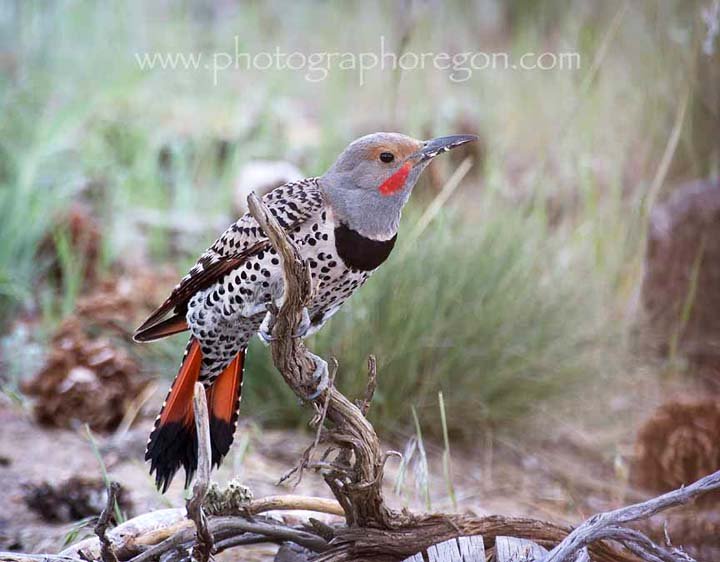
60-ish miles south east of Bend, Oregon or approx 9 miles north of Fort Rock, Oregon, Cabin Lake sits out where the forest and the desert meet. There is no lake. It was there when the Fort Rock area was an inland sea.
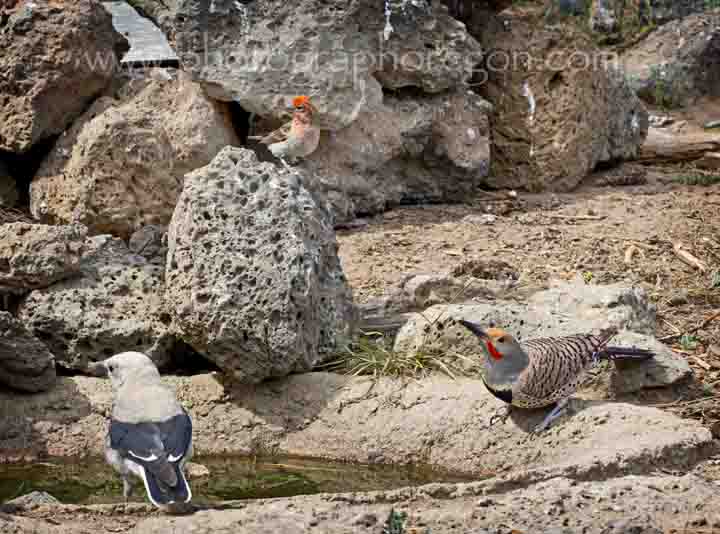
Because of the great diversity of birds and wildlife the ODFW with some help from the Audubon society built the Cabin Lake bird blinds, two watering holes and little buildings with window holes (no actual glass). Because it is the only water for a vast distance, a wide variety of wildlife comes and goes all day.
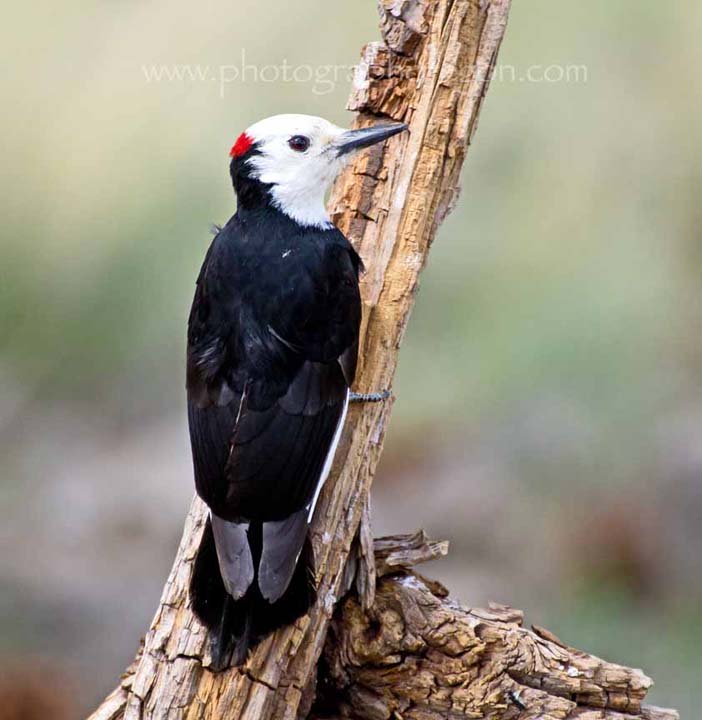
Male White Headed Woodpecker from PhotographOregon on Vimeo.
The photo and video opportunities are FANTASTIC. Literally, the birds come in just feet away. On some occasions I have had to move back with my long lens at 70mm to get the birds in the frame.
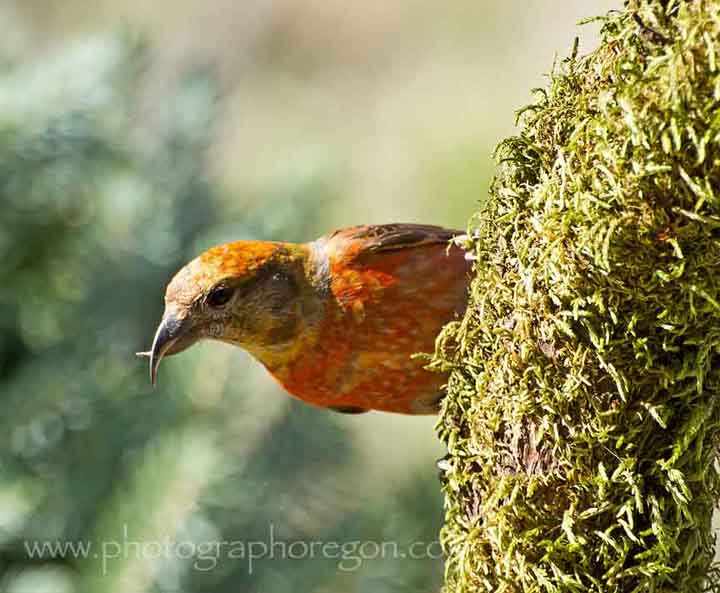
Since I have graduated to video stock clips I had a lot of fun recently with the hoard of Crossbills. This isn't the greatest video, but it was a lot of fun!
Many Red Crossbills Drinking from PhotographOregon on Vimeo.
The top blind brings in creatures from the edge of the forest and has a predominant population of Clark’s Nutcrackers and Pinyon Jays. I call them “The sharks and the jets.” Some little birds and flickers, woodpeckers also come to that one as well as blackbirds and doves.
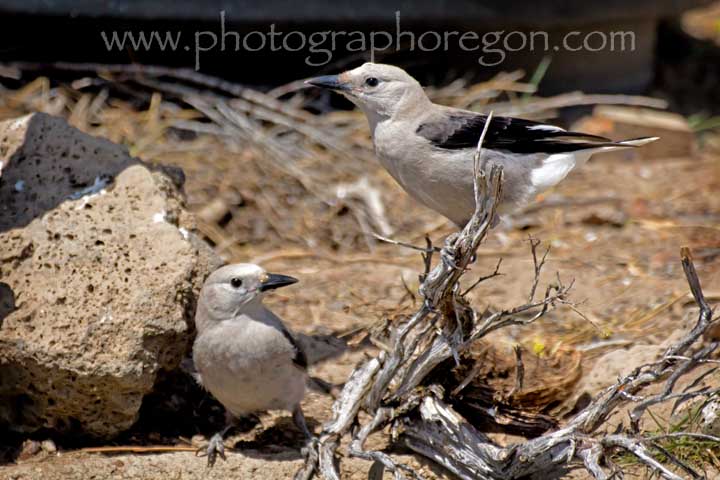
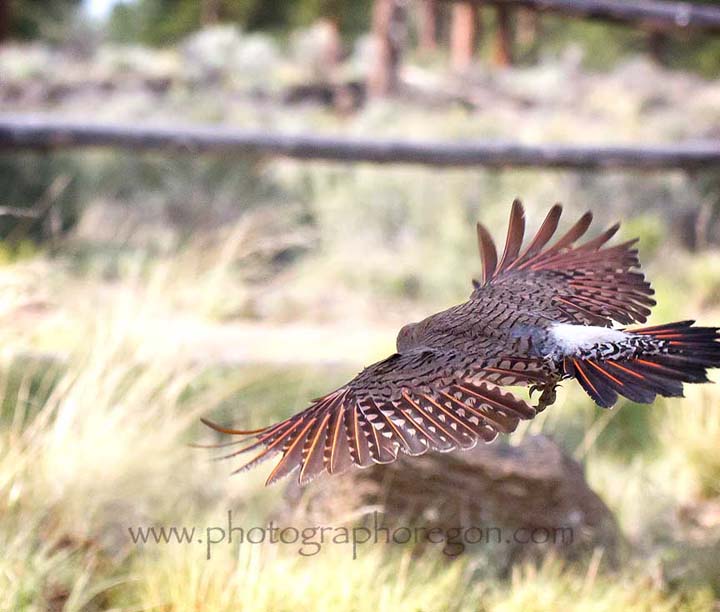
The Cabin Lake bird blinds consist of two blinds. The lower blind, which you get to by walking down the trail behind the top blind, has a little more cover and so the smaller birds tend to go there. Towhees, sparrows, bluebirds etc. The lower blind has more viewing ports and less ventilation.
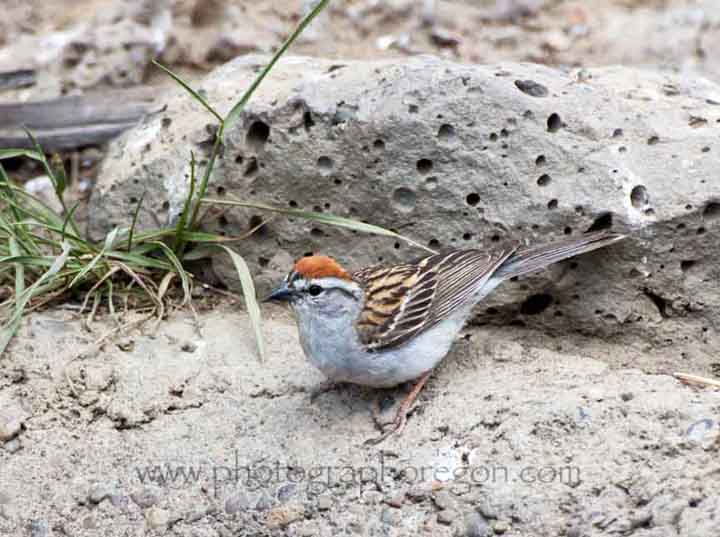
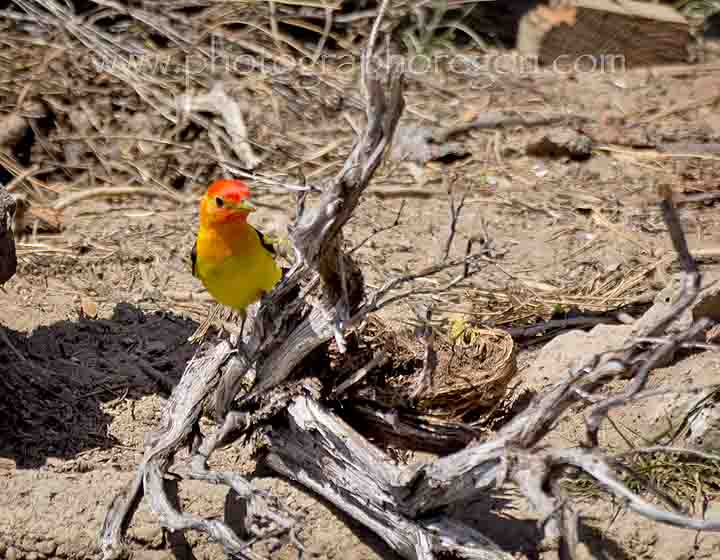
The Crossbills and Cassin’s Finches bounce back and forth between the two.
There are no bathrooms, potable water or food, so come prepared. I went through far more water sitting inside that blind than I imagined I would. If you are scared of little rodents that come in and beg for food….stay away
Only the birds have bathing facilities
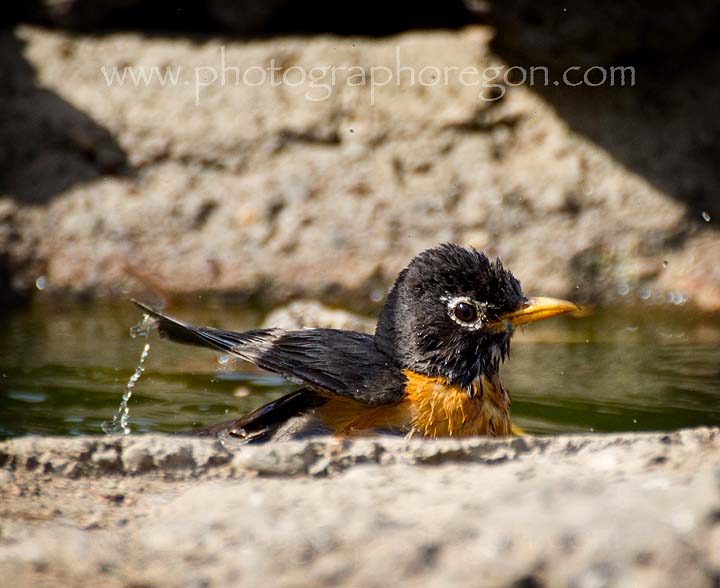
A few things I would recommend.
First, this is the only water for many miles for these animals. Some come in from far away. If you notice that the click of your camera is scaring them off. Let them get their drink before you take more photos. Woodpeckers, doves and flickers are especially skittish.
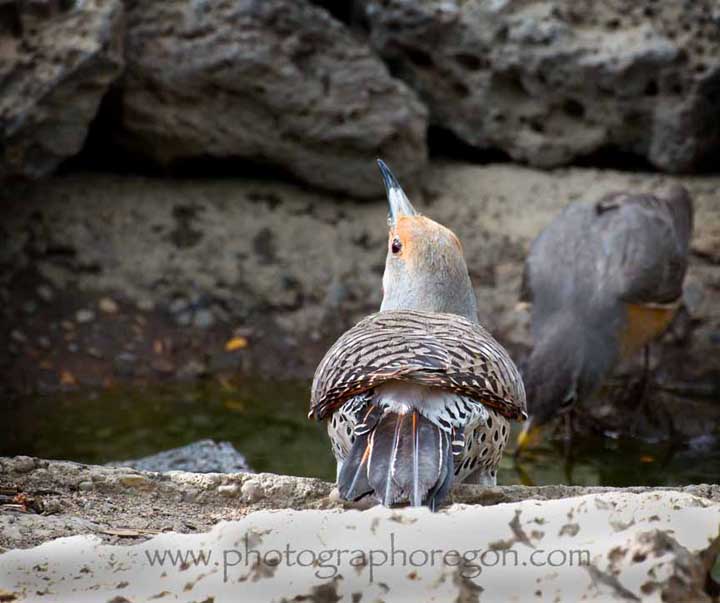
Leave the place as nice or nicer than you found it.
It’s okay to bring/put up props. There are rocks that people pile up and then prop branches for the birds to land on. One guy brings in a small tree.
Don’t use fake stuff.
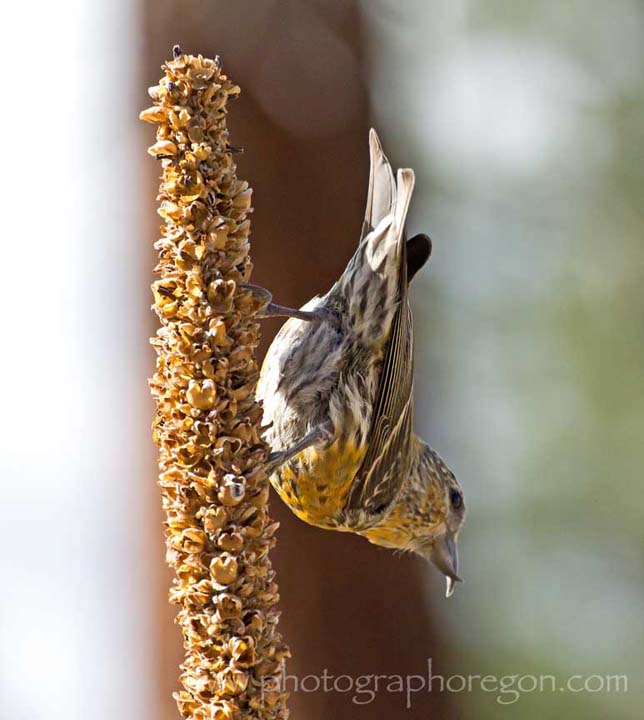
Be prepared that you could get there and the blinds could be in use. In that case you can #1 Ask nicely to join, if turned down... #2 Go to the South Ice Cave (not only is it well…cool and cavy, but there are a lot of birds there.) #3 Go to Fort Rock.
Don’t park in front of the top blind. The vehicle will then be in the photos. Pull further down by the split in the fence where the gate is, or even farther. This image has a car in the background that I disguised some with depth of field but it was still annoying.
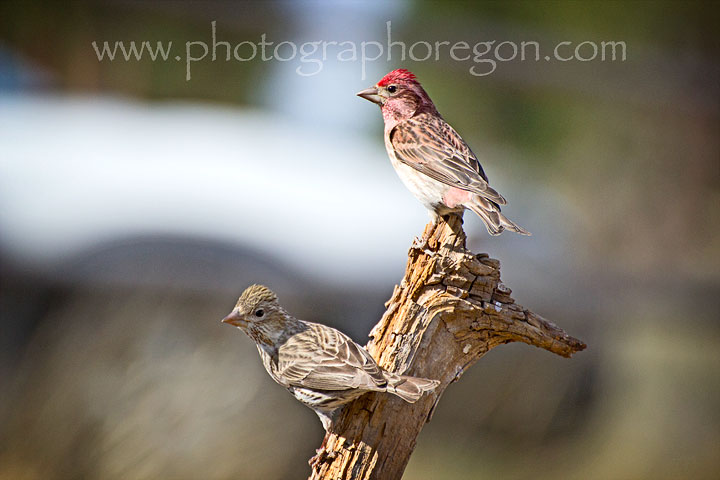
Camp somewhere else. The forest service abandoned the plan to rehab the buildings there because there is just too much trouble at night. Shooting, car burning etc. (I’ve been told that by several people but I’ve never seen a burned out car there.) Fort Rock is close and there’s food and safety there.
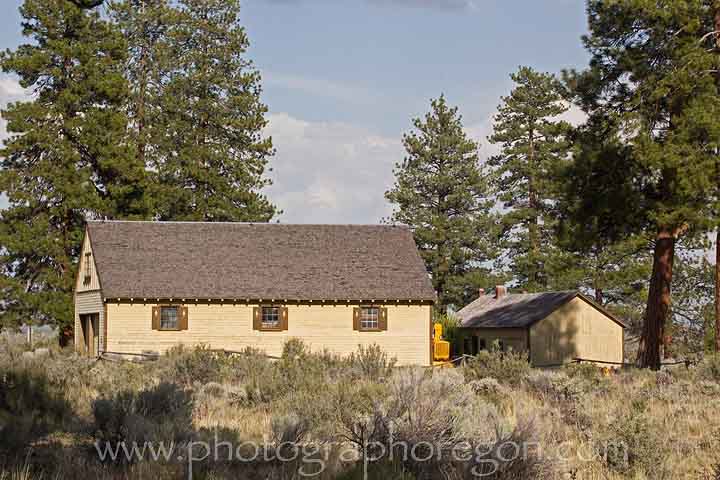
How To Get To The Cabin Lake Bird Blinds
How To Get To The Cabin Lake Bird Blinds:
GPS: 43 29’ 26” N 121 03’ 16” W
From Bend, Oregon:
Head south to Lapine. Turn left on Finley Butte Rd. Go approx 26 miles to FR18 (China Hat Rd…and yes you “could” go all the way down China Hat Rd from Bend, however, it’s a washboard and you would be shaken, not stirred, by the time you got there many hours later.)
This is 1 mile further down Finley Butte Rd. past the entrance to South Ice Cave. Turn right and go approx 6 miles down the gravel road. Take the first dirt road on the right after you see the sign on the left pointing to Cabin Lake. Wind around in there staying to the left heading towards the yellow buildings until you see the wooden fence. Park anywhere along there, NOT in front of the blind. Which looks like this.
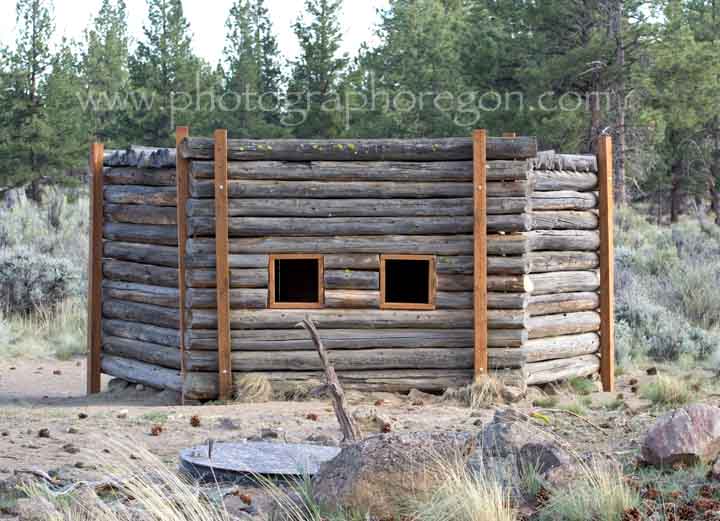
From Fort Rock, Oregon:
Go out Cabin Lake Rd Approx 9 miles. Take the first dirt road on the left past the compound of yellow buildings. Wind around in there staying to the left heading towards the yellow buildings until you see the wooden fence. Park anywhere along there, NOT in front of the blind.
Some of the great species of birds found there are: Lewis's Woodpecker, White-headed Woodpecker, Hairy Woodpecker, Northern Flicker, Gray Flycatcher, Loggerhead Shrike, Clark's Nutcracker, Morning Dove, Pygmy Nuthatch, Steller's Jay, Pinyon Jay, Gray Jay, Common Poorwill, Green-tailed Towhee, Mountain Chickadee, Brewer's Sparrow, Chipping Sparrow, White-crowned Sparrow, Cassin's Finch, Red Crossbill, Mountain Bluebird, Western Bluebird, Yellow-rumped Warbler, Townsend's Solitaire as well as the occasional owls, hawks and mammals such as badgers and every form of chipmunk and squirrels.
The blind water holes are turned off in the winter (November 15 to early May) to discourage deer moving in.
Fees: None
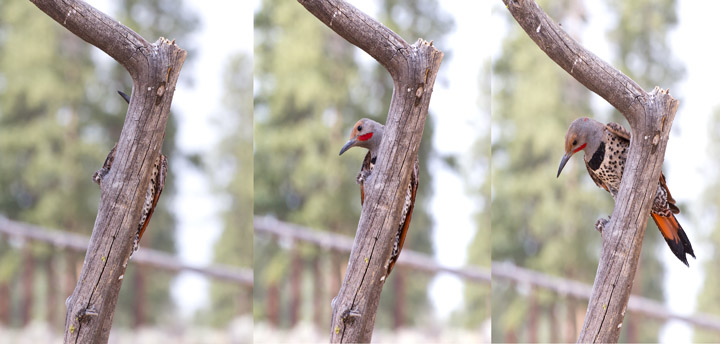
All in all, the Cabin Lake bird blinds are well worth going to.
Plan on spending 3-4 hours or more there, because if you don't plan on that you will miss anything you might have had otherwise planned. Time flies there.
I haven't been early in the morning or in the evening. The best days to go are the really hot days because the animals pour in. Only the top blind has decent ventilation because there are gaps between the logs. If you go on those days plan on being HOT and take lots of water.
I have also seen people bring their own little portable bird blinds. The advantage there is if the Cabin Lake bird blinds are occupied you can set up on the side and still get your shots.
Birding Oregon info on Cabin Lake bird blinds
